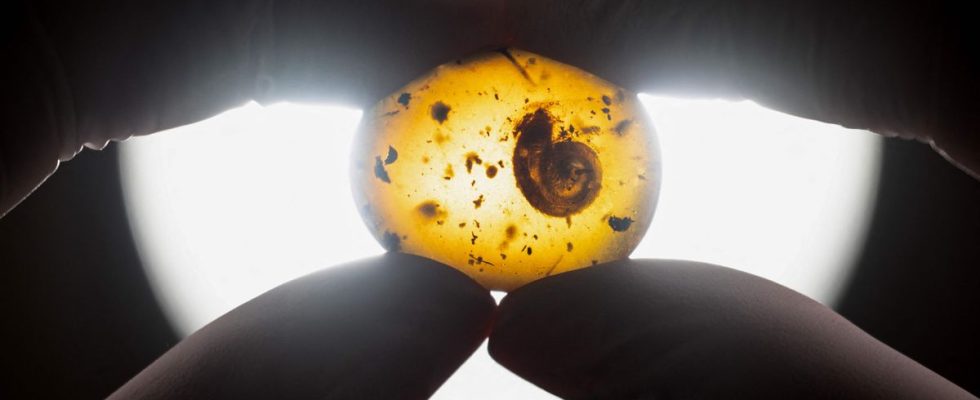It’s a story worthy of Jurassic Park. A 99 million year old fossil snail was recently discovered trapped in a piece of amber from Burma, we learned on Tuesday from the Colmar Natural History Museum where it will be exhibited. This species, “new for science”, has been baptized “Archaeocyclotus brevivillosus”, indicates in a press release the Alsatian museum.
The shell, which measures 9 mm long and 3.1 mm high, “is notably characterized by short and bristly hairs on its entire periphery”, specifies the museum, which was given this precious fossil l year spent by a collector. According to a study published in the scientific journal Cretaceous Research, this “hairiness could have constituted multiple selective advantages for these animals and therefore notably favored their exit from the waters towards terrestrial continental environments during the secondary era”, continues the institution. in his press release.
hairy snails
Information which “is not new” but which “corroborates the previous ones: the snails, when they conquered the terrestrial environments, had hairs on their shell”, explains the malacologist (specialist in molluscs) Jean-Michel Bichain, researcher attached to the museum and one of the authors of the study. Hairiness which “gave them several advantages”, particularly in terms of thermoregulation or the fight against predators, by promoting camouflage, he continues.
“There are 30 species of snails that are known in Burmese amber”, a fossil resin extracted from the Hukawng valley (northern Burma) and which dates back around 99 million years, explains Jean-Michel Bichain. He insists on the “extraordinary” character of this amber deposit which “gives a real window on the biodiversity of the era of the dinosaurs”.
At the Colmar museum in June
In total, “there are 200 specimens [d’escargots] in collection”, which is “very, very low”, he still notes. “Any new species therefore informs us about the history of the group”, continues the researcher. “Very few are described and even fewer snails. On our scale as specialists, it is therefore a very pleasant moment to be able to handle such a part,” he confides.
The snail with the “hairy” shell will be visible in its amber gangue in June at the Colmar Museum during an exhibition which will also host a life-size reconstruction of one of the largest and most complete tyrannosaur skeletons.

